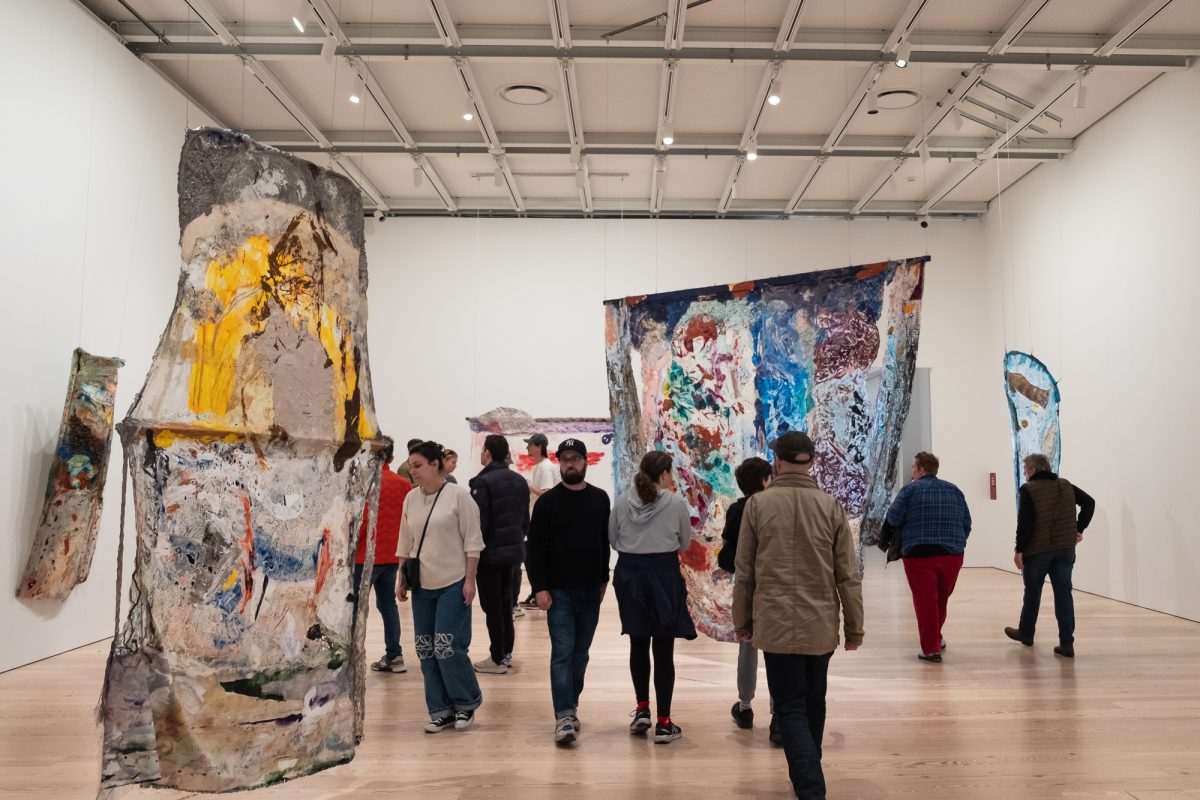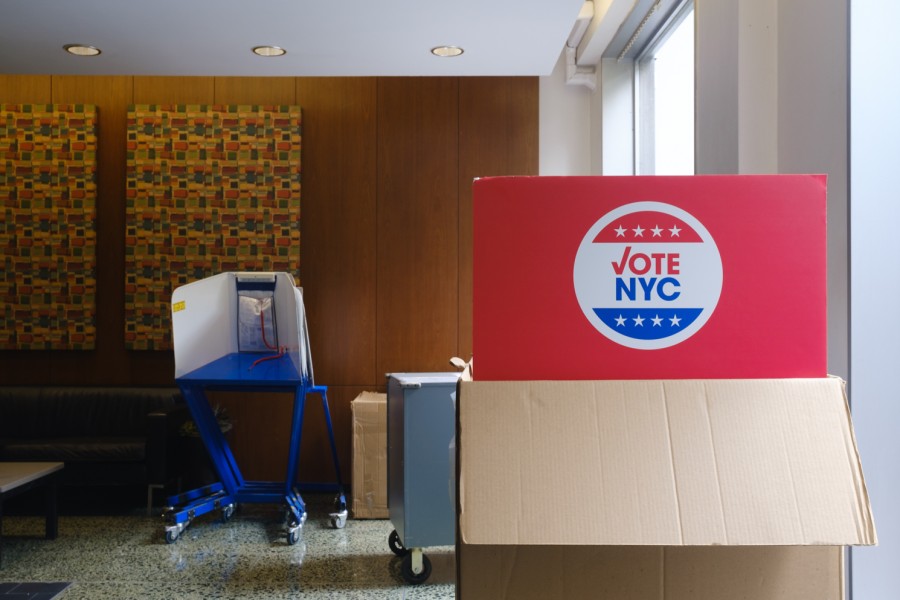A step inside the new exhibit at NYU’s Grey Art Gallery is a step into a world of environmental activism, social change and the global AIDS pandemic.
“Toxic Beauty: The Art of Frank Moore,” which opens today, is a window into the life of a talented painter who used his artistic passions to address growing ecological and social concerns. The two-part exhibit begins with 35 of Moore’s paintings at the Grey Art Gallery and continues at Fales Library, NYU’s rare book collection. At Fales, viewers can see a select group of Moore’s drawings and sketchbooks from the “Frank Moore Papers,” an archive of Moore’s personal documents donated to NYU in 2003 by the Gesso Foundation.
“The notebooks have all these writings and drawings, and they give such an insight into Frank and the various aspects of who he was,” co-curator Susan Harris said. “The archive became a key into his work. It includes all of the source and research material for the paintings in the show. Going to Fales makes it a very legible presentation of the archives.”
Moore was an abstract and figurative painter who used oil, gouache and watercolor techniques. His earlier, introspective works allowed for the exploration of male identity and experimentation with different artistic mediums. After Moore was diagnosed as HIV positive in 1985, his paintings began representing AIDS. Some are sexually explicit, while others include images of syringes, genomic sequences, sarcophaguses of people Moore knew who died from the illness and medieval instruments used to torture homosexuals and sodomites. Some of his work is also rooted in a love for the natural world. Having grown up in the Adirondacks, Moore became increasingly concerned with the environment and other environmental disasters that have started to plague the landscape, such as oil spills.
“He began to question the use of pesticides,” co-curator and gallery director Lynn Gumpert said about Moore’s “Niagra” painting. “He thought, ‘I’m taking all of this toxic medication, which is harming my body to get rid of my disease. So how are we poisoning the landscape?’ He started doing a lot of research on Niagara Falls and found there are over 300 toxic chemicals, so he silk-screened them up in the vapors. He got reports of the poisoning of the Great Lakes, and checked off which of the chemicals he painted into the water.”
Decorative framing is another notable facet of Moore’s work. The frame for “Wizard” consists of empty pill bottles once filled with his AIDS medication.
“It’s pretty brutal because this was his life,” Gumpert said. “Just mountains of pills and a bleak forecast. It gives you the chills.”
Moore died of AIDS on April 21, 2002, at age 48. His art keeps his message alive.
“[The exhibit] is a reminder we can live a life in which we can be moral, ethical citizens both toward each other and our environment,” Harris said. “It’s a warning. The clock is ticking, but we can all contribute to taking responsibility and making our world a better place.”
“Toxic Beauty” opens Sept. 6 and will be open until Dec. 8.
A version of this article appeared in the Sept. 6 print edition. Kristina Bogos is a staff writer. Email her at [email protected].











































































































































